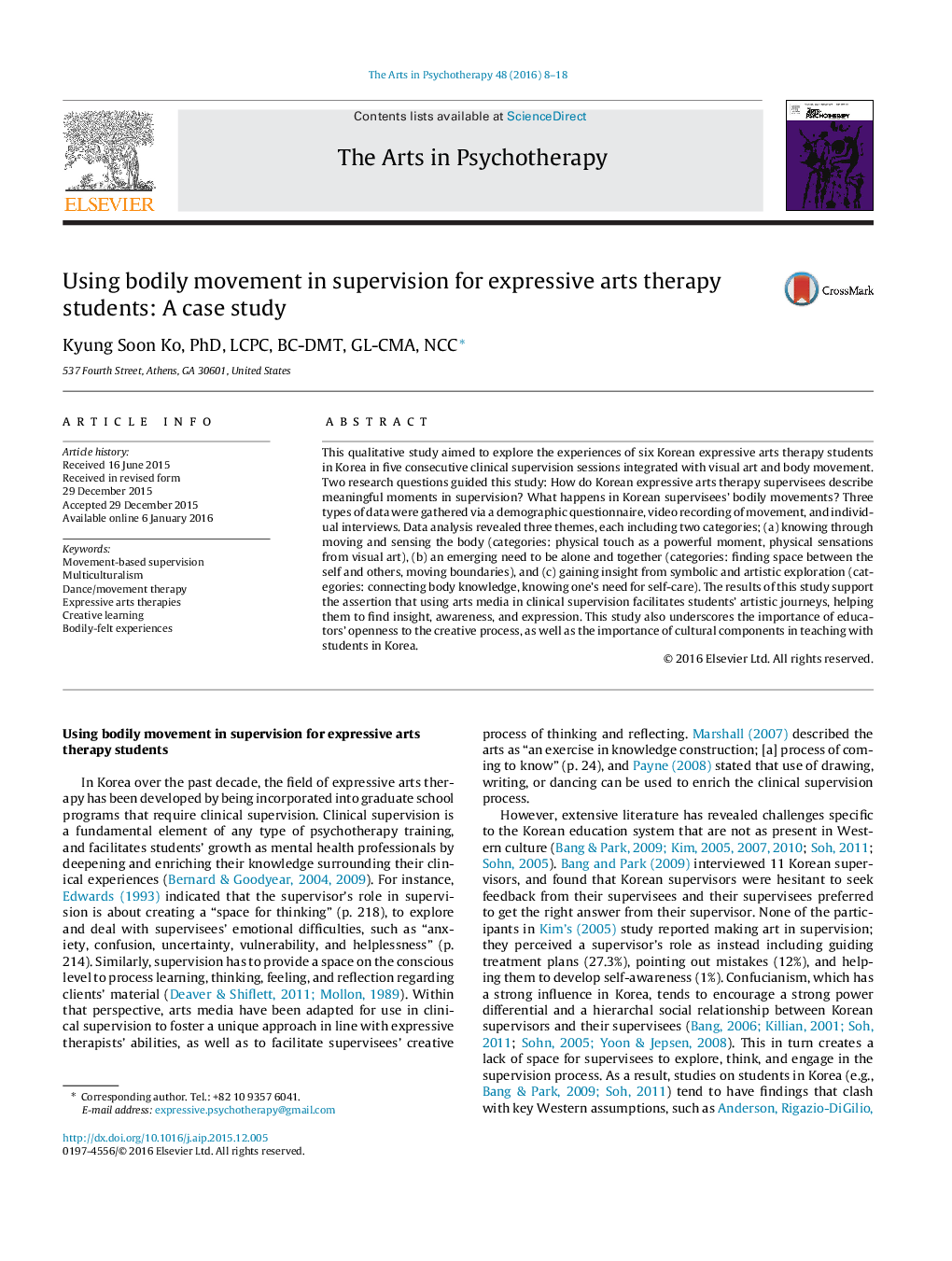| Article ID | Journal | Published Year | Pages | File Type |
|---|---|---|---|---|
| 343573 | The Arts in Psychotherapy | 2016 | 11 Pages |
•First study in Korea on combining visual art and movement in supervision.•Six Korean expressive arts therapy students’ bodily felt experiences described.•Different cultural preferences in using space in clinical work in Korea.•Importance of the creative process in ensuring professional identity.•Unexpected finding about cultural aspects of physical touch in Korean culture.
This qualitative study aimed to explore the experiences of six Korean expressive arts therapy students in Korea in five consecutive clinical supervision sessions integrated with visual art and body movement. Two research questions guided this study: How do Korean expressive arts therapy supervisees describe meaningful moments in supervision? What happens in Korean supervisees’ bodily movements? Three types of data were gathered via a demographic questionnaire, video recording of movement, and individual interviews. Data analysis revealed three themes, each including two categories; (a) knowing through moving and sensing the body (categories: physical touch as a powerful moment, physical sensations from visual art), (b) an emerging need to be alone and together (categories: finding space between the self and others, moving boundaries), and (c) gaining insight from symbolic and artistic exploration (categories: connecting body knowledge, knowing one's need for self-care). The results of this study support the assertion that using arts media in clinical supervision facilitates students’ artistic journeys, helping them to find insight, awareness, and expression. This study also underscores the importance of educators’ openness to the creative process, as well as the importance of cultural components in teaching with students in Korea.
